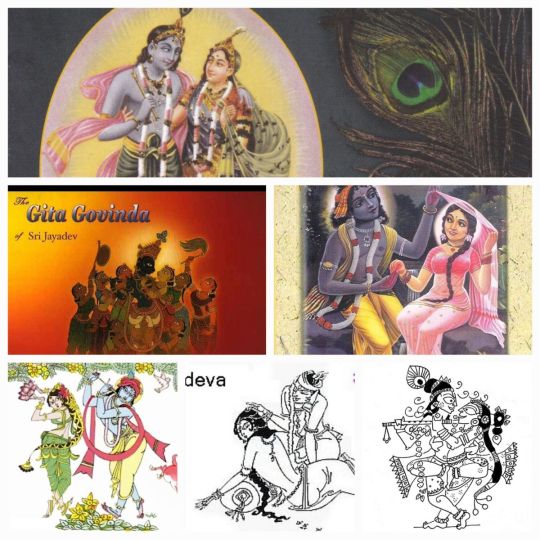#odisha culture
Explore tagged Tumblr posts
Text
Know About - History of Odisha & Geography of Odisha
In ancient times Odisha was famous as 'Kalinga'. The history of Odisha is about 5,000 years ancient. To know more in detail about Odisha's history and Geography of Odisha read our informational blog. I believe that after reading our blog you will be satisfied.
#odisha map#odisha festival#odisha culture#places to visit in Odisha#history of Odisha#climate of Odisha#geography of Odisha#famous festival of Odisha
1 note
·
View note
Text
The Endangered Dance Form Of West Bengal
Dance, art, and culture and an adda at the local chai shop make a bangali, a pure bangali. Let's have an adda over tea about the endangered dance form, Chhau dance, also spelled Chhou dance. It is found in other regions of India like Jharkhand, and Odisha with different forms and names- Purulia Chhau of West Bengal, the Seraikella Chhau of Jharkhand, and the Mayurbhanj Chhau of Odisha. The dance includes everything from a structured dance with Shaivist, Shakti, and Vaishnavist religious themes to a celebration of martial arts, acrobatics, and athletics done in the festive themes of a folk dance.

It is customarily performed by an all-male group, and the dance may be a syncretic dance form that evolved from the blending of classical Hindu dances and the customs of long-extinct local tribes. The dance is remarkable and unites individuals from various socioeconomic levels in a joyful and religious atmosphere. Performed by male dancers who trained under Gurus or Ustads (masters), or who come from families of traditional artists. Its roots can be found in indigenous dance and combat styles. The basic language of Chhau dance consists of khel (fake combat moves), chalis and topkas (stylized animal and bird gaits), and uflis (movements based on a country housewife's everyday tasks). Oral transmission is used to pass on the knowledge of dance, music, and mask-making. It lasts all night long and is performed in an area known as an akhada or asar.

Local mythology, folklore, scenes from the Ramayana and Mahabharata, as well as abstract concepts, are some of the topics covered by the dancers' repertory. The vibrant music is characterized by the rhythm of indigenous drums like the dhol, dhumsa and kharka and the melody of the mohuri and shehnai. The majority of the dancers are from the Munda, Mahato, Kalindi, Pattnaik, Samals, Daroga, Mohanty, Acharya, Bhol, Kar, Dubey, and Sahoo communities. Musicians come from the Mukhi, Kalindi, Ghadhei, and Dhada groups. They take part in the instrument production as well. Communities of traditional painters known as Maharanas, Mohapatras, Sutradhars are involved in the making of these masks.

Not only were Paika and Natua the forerunners of Chhau dance (particularly Purulia style), but Nachni dance also had a significant influence on the way Chhau is known today. The female moves and gaits used in Chhau dance are virtually solely taken from Nachni dance. The Chhau dance was added to the Representative List of the Intangible Cultural Heritage of Humanity by UNESCO in 2010. The Government Chhau Dance Centre and the Mayurbhanj Chhau Nritya Pratisthan were created by the Government of Odisha in 1960 and 1962, respectively, in Seraikella and Baripada.
44 notes
·
View notes
Text
Atakali Bhoga on 4th day of Panchuka at Padmapur, Cuttack, Odisha.



Padmapur has a ritual for the 4th day of the Panchuka. The women from 8-10 families of the Tripathy Sahi gather at the village Shiva Temple and cook Atakali and offer them to Lord Shiva as bhog (prasad).
Atakali is a traditional Odia dessert, similar to kheer. It is a pudding made from rice, jaggery/sugar, coconut, milk and dry fruits.
Padmapur is a small village in Cuttack district, located few kilometres away from Cuttack City. Padmapur and its adjoining villages are the hub of century old firecrackers cottage industries and hence known as Odisha's Sivakasi.
#odiablr#desiblr#desi tumblr#odia puja and festivals#odia culture#odia rituals#odisha#panchuka#kartikeshwar puja#kartika month vrat#kartika purnima
3 notes
·
View notes
Link

Chhau Dance of Mayurbhanj is a treasure trove of cultural heritage, showcasing the rich traditions and artistic prowess of Odisha. With its vibrant costumes, intricate movements, and enthralling storytelling, Chhau Dance mesmerizes and transports the audience to a world of myth and magic.
https://www.indianetzone.com/58/chhau_dance_mayurbhanj.htm
3 notes
·
View notes
Text
Bagata Tribe: A Comprehensive Overview of an Indigenous Community
The Bagata Tribe, an indigenous group primarily residing in the southeastern part of India, particularly in Andhra Pradesh, presents a unique tapestry of cultural heritage and traditional practices.
0 notes
Text
Preparations Complete for Jamshedpur's Oldest Bala Ganpati Vilas Ganesh Festival
The 106-year-old Ganesh Mahotsav will run from September 7 to September 21; Odisha Governor Raghubar Das to inaugurate the event. Preparations have been finalized for the Ganesh Mahotsav organized by Bala Ganpati Vilas, the oldest in Jamshedpur. JAMSHEDPUR – The city’s oldest Ganesh festival, organized by Bala Ganpati Vilas, is set to begin on September 7 and will continue until September…
#106-year-old festival#amusement rides Jamshedpur#आयोजन#Bala Ganpati vilas#culture#Ganesh Chaturthi#Ganesh festival Jamshedpur#Ganesh idol immersion#Jamshedpur cultural events#Jamshedpur fair#Jamshedpur Ganesh Mahotsav#Odisha Governor Raghubar Das
0 notes
Video
youtube
Engagment Intro || Part -1 || Krishna ❤️ Twinkle || Uttarakhand || Odish...
#youtube#love#engagement#india#indian#indian culture#romance#entertainment#party#uttarakhand#odisha#ring#ring ceremony#trending#viral trends#viral video#indiantradition
1 note
·
View note
Text
Odisha Silk Sarees: Rich Border Fashion Trend in India
Odisha Silk Sarees: A Fashion Statement in Metros

Odisha silk sarees with rich borders have been a prominent fashion choice in metropolitan cities like Delhi, Kolkata (Calcutta), and Mumbai for over two decades. These sarees are available in a variety of colors including cream, magenta, grey, blue, green, yellow, and more. The body of the saree features a contrast resham work border and a heavy pallav with resham work, making them irresistible to urban women of high stature. Unique Designs and Exclusivity
Some Odisha silk sarees boast unique designs, such as maroon or green sarees with borders and pallavs in deeper shades of green, adorned with resham work throughout the body. These exquisite sarees are generally considered luxurious and are priced beyond the reach of ordinary women. Sarees with intricate resham work all over are particularly expensive, reserved for special occasions due to their weight and elaborate detailing.
Versatile Elegance
While Odisha silk sarees are not typically worn casually or for shopping, they make elegant choices for dinner parties and tea gatherings. The thread work sarees, being heavier, are best suited for special events, serving as formal attire that exudes sophistication and grace.
Demand for Odisha Silk Handloom Sarees
Odisha silk handloom sarees are highly sought after both in India and internationally for their exceptional craftsmanship, superior fabric quality, captivating color combinations, and long-lasting durability. The art of weaving has evolved significantly in recent decades, showcasing the expertise and artistic traditions of the skilled weavers.
Cultural Heritage and Artistic Evolution
The traditional attire of Oriya women often features bright-colored cotton sarees, while Sambalpur silk sarees stand out for their superior quality and intricate handloom weaving. The rich cultural heritage of Odisha is reflected in the painstakingly woven silk sarees, adorned with motifs like temple borders, lotus flowers, conches, and wheels that hold symbolic significance.
Weaving Innovations and Design Adaptations
Over time, the traditional vegetable dyes used in Odisha handloom sarees have been replaced by chemical dyes, offering a wider range of colors and patterns. Various styles of handloom sarees, including Bomkai and passapali sarees, showcase unique designs inspired by tribal artistry and regional influences, adding to the diverse tapestry of Odisha's textile heritage.
Conclusion
Odisha's handloom industry, rooted in its rich cultural traditions and skilled artisanal workforce, continues to produce exquisite silk sarees that embody the essence of the state's heritage. From intricate weaves to vibrant colors, Odisha silk sarees stand as a testament to the timeless artistry and craftsmanship of the region.
#fashion#lifestyle#sarees#indianfashion#womenswear#indianwear#designer#style#clothing#dresses#Odisha silk sarees#handloom sarees#rich border#fashion trend#vibrant colors#intricate designs#cultural heritage#weaving traditions#craftsmanship#quality
0 notes
Text
Venerating Jayadeva's Gita Govinda: Its Enduring Impact on Odia Culture and Arts #BlogchatterA2Z
Venerating Jayadeva's Gita Govinda: Its Enduring Impact on Odia Culture and Arts #BlogchatterA2Z #GitaGovinda #Jayadeva #OdiaCulture #OdissiDance #BhaktiMovement #SanskritLiterature #OdishaFestivals #JagannathTemple #IndianClassicalArts #SpiritualOdisha
Illuminating the Divine: The Profound Impact of Jayadeva’s ‘Gita Govinda’ on Odia Culture Introduction:Jayadeva’s ‘Gita Govinda’ is not just a literary masterpiece but a cornerstone of Odia culture and spirituality. Composed in the 12th century by the saint-poet Jayadeva, this Sanskrit text is a lyrical fusion of profound spirituality and sublime poetry. It celebrates the divine love of Krishna…

View On WordPress
#Bhakti movement#Gita Govinda#Indian classical arts#Jagannath Temple#Jayadeva#Odia Culture#Odia music#Odissi dance#Religious practices in Odisha#Sanskrit literature
0 notes
Text
Find the best Places to Visit in Odisha & Odisha Map
Are you interested in visiting Odisha? If your answer is yes, then you should learn more about these places to visit in Odisha, the famous festival of Odisha, Culture, History, Climate, Where to Stay, Transport, Economy, and Education, these more queries. To learn more, visit our blog.
#odisha map#places to visit in odisha#odisha festival#famous festival of odisha#odisha culture#history of odisha#climate of odisha#geography of odisha
1 note
·
View note
Text

Nuakhai Juhar
#NuakhaiJuhar#PrimeMinisterOfIndia#simdega#Jharkhand#tribal#culture#harvestfestival#harvestseason#Odisha#chhattisgarh#upsc#upscprelims#upsc2023#upscaspirants#currentaffairs#dailynews#generalknowledge#infographic#india
0 notes
Text

Dhabaleswar Temple, Cuttack. Image Source: Pinterest
Panchuka Vrata!
The month of Kartika is considered very auspicious for people of Odisha. This month is dedicated to Lord Shiva. According to the legend, Lord Shiva protected the world by killing Tripurasura in this month.
Alongwith, keeping vrat on every Monday of this month, the devotees also abstain from eating non-vegetarian food for the entire month. The last five days are considered especially auspicious and are together known as Panchuka. It starts from Bada Ekadashi and culminates on Kartika Purnima.
Bada Ekadashi is also known as Hari Ujjapan Ekadashi and on this day, Lord Vishnu wakes up from his Yoganidra.

Lord Jagannath Panchuka First Day Besha. Image Source: Pinterest
Goddess Laxmi and Lord Narayan are also worshipped on five days of Panchuka. Lord Jagannath is attired in different 'Besas' and Lord Karthikeya's idols are worshipped in different Pandals.


Another unique Odia tradition is the worship of Brundavati (Tulasi) by young girls and women on Panchuka. They draw beautiful rangoli designs or 'Muruja' as called in Odia, infront of Tulasi Chaura.




Happy First day of Panchuka to everyone!
#odiablr#desiblr#desi tumblr#panchuka#kartika month vrat#hari ujjapan ekadashi#kartika purnima#odia puja and festivals#odia culture#odisha
5 notes
·
View notes
Text
Oriya language, also known as Odia, holds a significant place in the cultural and linguistic landscape of India. With a rich history spanning centuries, Oriya has evolved through various phases, shaping its present position as one of the prominent languages in the country.

0 notes
Video
youtube
Cherish the 2 topmost benefits to book a car in Puri Jagannath
Odisha Travels, the leading tour operator offers feasible and hassle-free solutions to book a car in Puri Jagannath. Find sanitized cars with free breakdown covers.
0 notes